Monthly Cell Challenge #6 / 2025
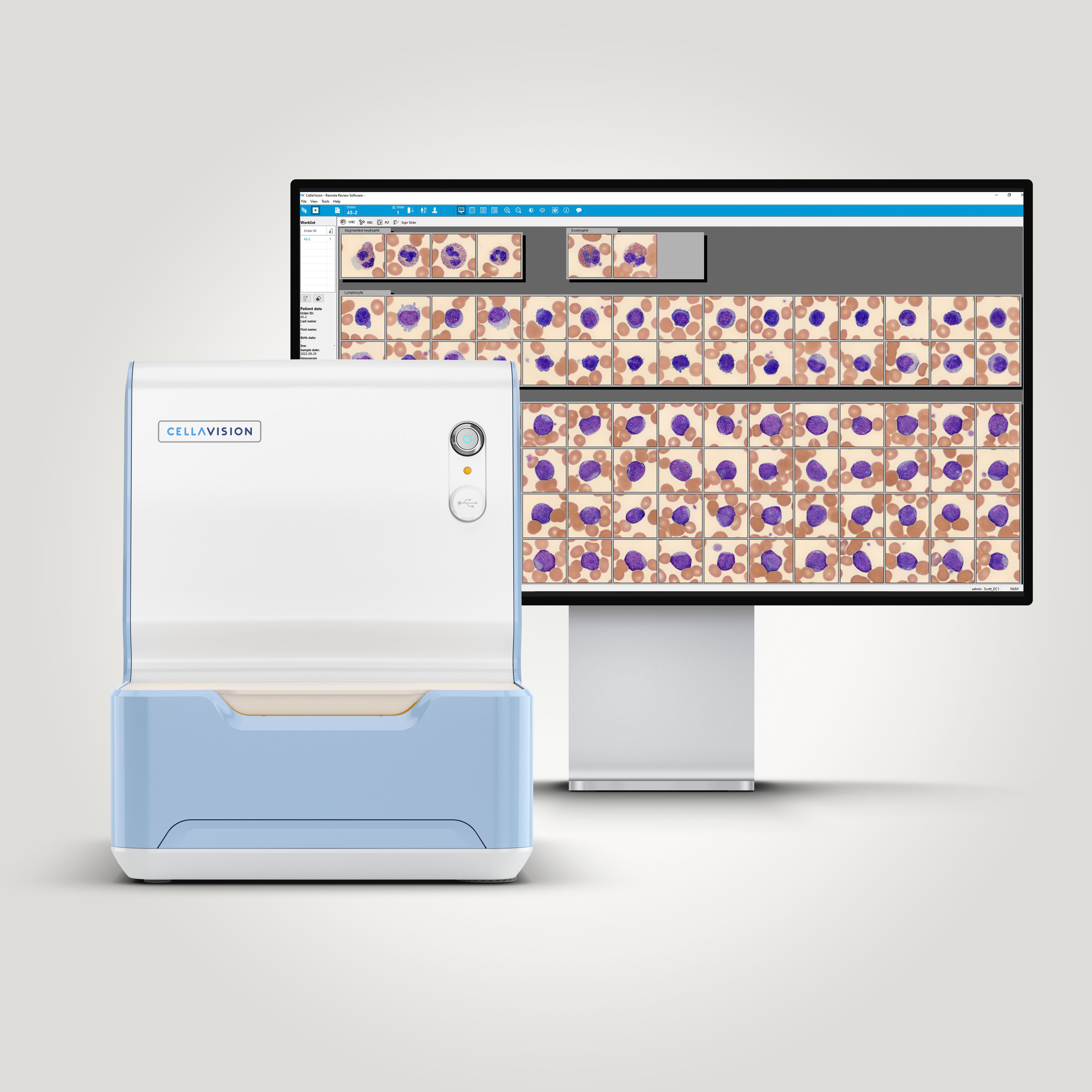
Blast attack
Description:
A 58-year-old male presented to the emergency room with fever, weakness, abdominal pain, enlarged lymph nodes, enlarged spleen, shortness of breath and loss of appetite.
CBC results:
| Test | Result | Units |
|---|---|---|
| WBC | 2,5 | x109/L |
| HGB | 112 | g/L |
| MCV | 101 | fL |
| PLT | 144 | x109/L |
Smear review on CellaVision® DC-1:
| WBC Differential | % | x109/L |
|---|---|---|
| Neutrophils | 3,6 | 0,1 |
| Eosinophils | 1,8 | 0,0 |
| Lymphocytes | 26,8 | 0,7 |
| Blasts | 67,9 | 1,7 |
On the CellaVision® Remote Review Software the MedTech found a low number of neutrophils, eosinophils and lymphocytes. They also saw a larger number of small to medium sized, fairly uniform blast cells, with high N:C ratio. A comment which describes the cells was added and the sample was sent to pathologist for review.

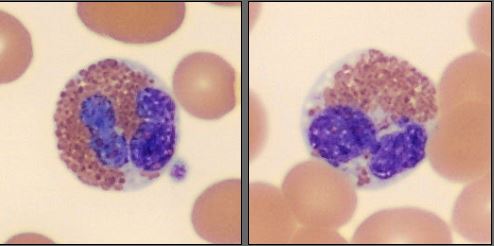
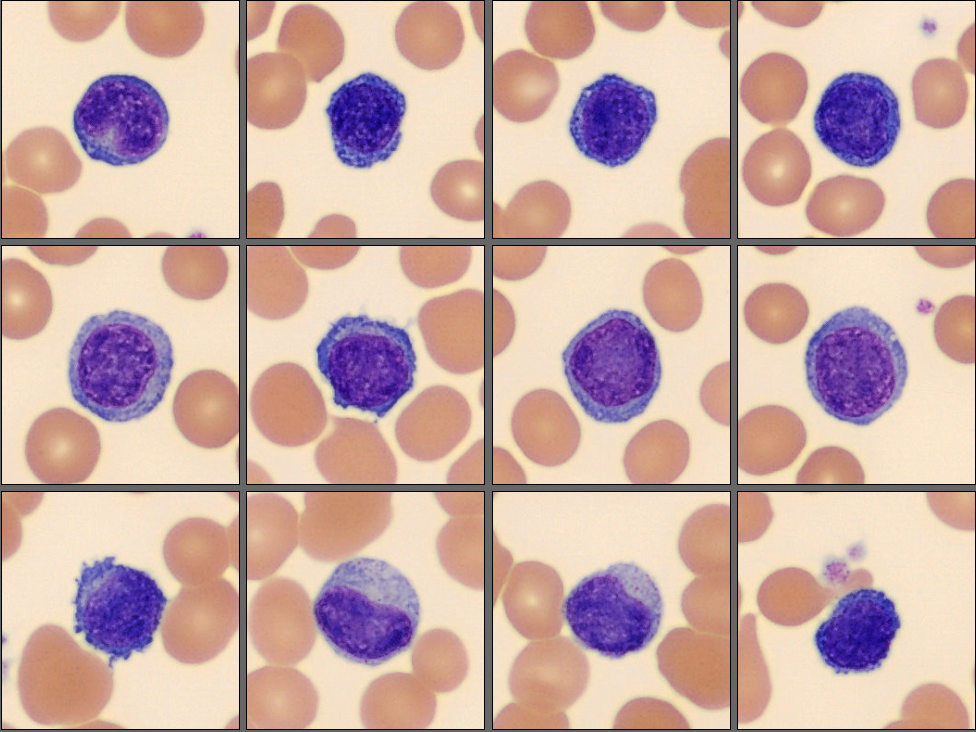
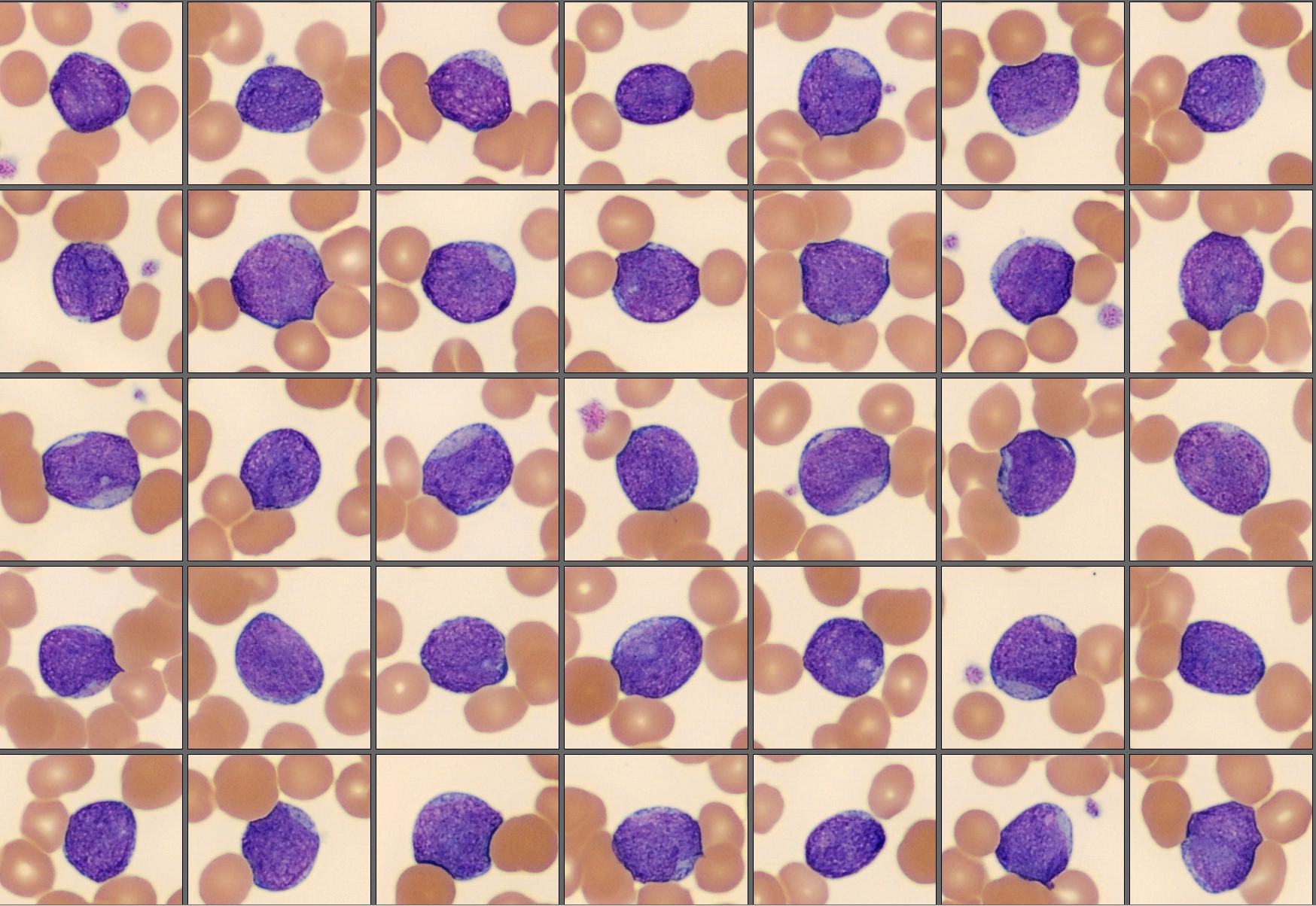
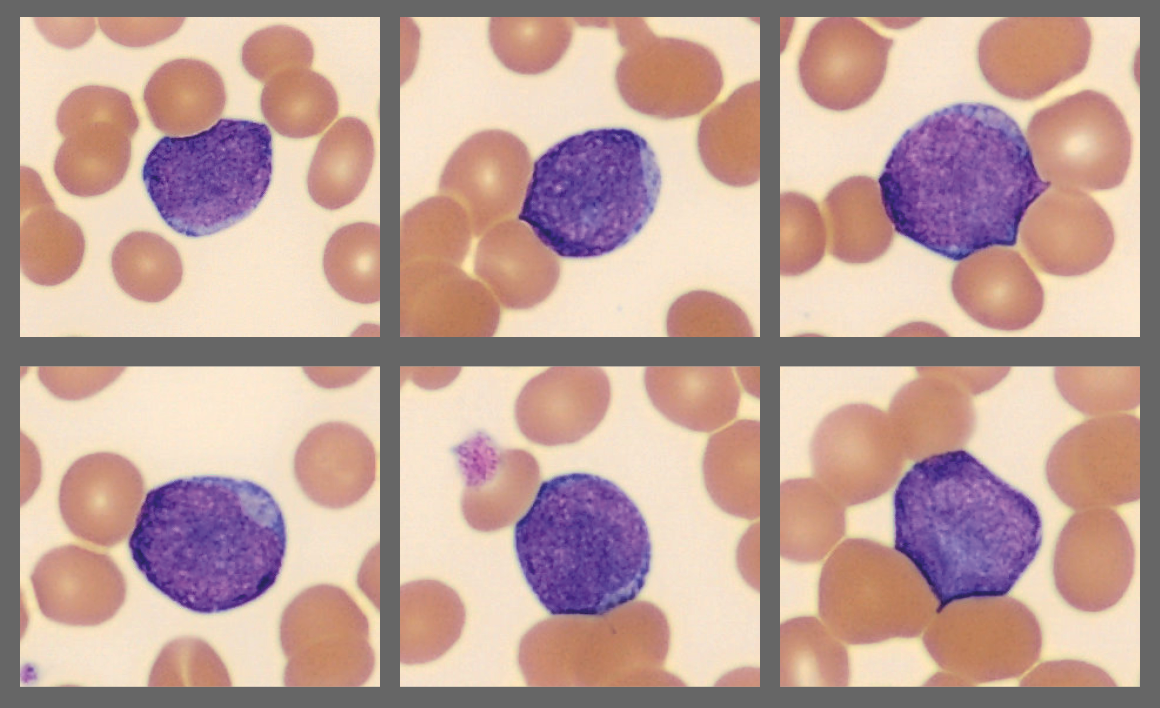
Flow cytometry results: CD 45+, CD34+, HLA-DR+, TdT+, CD19+, CD 22+, CD10-, CD20-
Diagnosis:
Adult B-Cell, ALL
Discussion:
B-cell acute lymphoblastic leukemias (B-ALL) are more common in children than in adults with about 75% of all patients under 6 years of age. With age there is a second peak from age 50 and up. [1][2]
The leukocyte count is often elevated but can be normal or, as in this case, decreased. On smears, the ALL lymphoblasts vary from small with scant cytoplasm, condensed chromatin and indistinct nucleoli to larger cells with moderate cytoplasm which is pale blue-gray and can occasionally have vacuoles and a nucleus with prominent nucleoli and disperse chromatin. They can be either round or show convolutions. [1][2]
In children, the treatment of ALL is based on risk-strategies which have led to significant improvements in the outcome with over 90% in long-term remission. But the treatment in adult ALL is not as successful because of the adverse biology and toxicity in adult patients. [1]
There are several different treatments and much depends on which subtype the patient is diagnosed with. The main types of treatment are chemotherapy, targeted therapy drugs, immunotherapy, radiation therapy and stem cell transplantation.
References:
[1] Wood, BL., Gujral, 2. B-lymphoblastic leukaemia/lymphoma. In: WHO Classification of Tumors series, 5th ed.; vol 11, IARC publications, https://publications. Iarc.who.int/637. 2024. p. 330-335.
[2] Bain, Barbara J., (2015) Blood Cells, A Practical Guide (5th edition), John Wiley & Sons Ltd, p. 457-460; ISBN: 978-1-118-81733-9
[3] American Cancer Society, https://www.cancer.org/cancer/types/acute-lymphocytic-leukemia (Accessed 2025-05-15)